Despite heated campaign rhetoric and the Orlando shooting, new polls show that the American public’s views of both Islam and Muslims have become more favorable. Shibley Telhami explains why. This post was originally published on Politico.
Something remarkable has happened in the middle of an American presidential campaign noted for its inflammatory rhetoric about Islam and Muslims, and marred by horrific mass violence perpetrated on American soil in the name of Islam: American public attitudes toward the Muslim people and the Muslim religion have not worsened—in fact they have become progressively more favorable, even after the Orlando shooting. That’s what two new polls show, one taken two weeks before Orlando, the other two weeks after, to be released at the Brookings Institution on Monday.
Comparing the results of three University of Maryland national polls—all fielded by Neilson Scarborough—taken in November 2015, in May 2016 and in June 2016 (after the June 12th Orlando shooting), the trends are surprising. Asked about their views of the Muslim people, respondents who expressed favorable views went from 53 percent in November 2015, to 58 percent in May 2016, to 62 percent in June 2016. At the same time, favorable views of Islam went from 37 percent, to 42 percent, to 44 percent over the same period—still under half, but with marked improvement over a period of seven months. (See the survey methodology here.)
In parallel, a “clash of civilization” question, asking about the compatibility of Islamic and Western religious and social traditions, showed similar trends. The percentage of those who said the two were compatible went up from 57 percent, to 61 percent, to 64 percent over the three polls.
On all three issues, Republican views remained relatively fixed over the three polls. The change occurred among Democrats and Independents. For example, among Democrats, favorable views of the Muslim people rose 12 points. Among independents, that number rose 17 points.
How does one account for these results? Four factors may provide some context for why, despite heated campaign rhetoric and the worst mass shooting in American history, views of Islam and Muslims have not worsened and have instead, in some measurable cases, improved.
First, because GOP candidates have used the issue of Islam and violence as a political weapon against their Democratic opponents and President Barack Obama, the emphasized link between Islam and violence has become associated with GOP candidates, especially Donald Trump. To agree with the view that Islam and terrorism are tightly linked, in other words, is to take Trump’s side of the political divide. On the one hand, this means that his core supporters will likely embrace his opinions, and the poll results indeed show that Trump supporters bucked the national trend. On the other hand, those who oppose him have the tendency to reject his view in part because it’s his and because he is using it for political gain. It’s less about Islam and Muslims, and more about taking political sides.
Second, the president of the United States and Democratic candidates, especially Hillary Clinton and Bernie Sanders, put forth a forceful counter narrative over the past several months—one that differentiated terrorists from the Islamic faith and Muslims in general and warned against infringement of the civil liberties of Muslim Americans. And, that the counter narrative unfolded during a heated election season magnified its influence. Here a majority of Americans seem to lean toward the president’s case: In the post-Orlando poll, 52 percent viewed Obama’s reaction to the shooting favorably, and 50 percent Hillary Clinton’s—but only 42 percent Donald Trump’s.
Third, measures proposed by GOP candidates, such as a temporary total ban on Muslims from entering the United States have been deemed extreme by many, thus generating a backlash, even among many Americans who may otherswise have been inclined to be somewhat suspicious of Islam and Muslims.
Fourth, the public’s view of Orlando is far more nuanced than some may assume. Only 33 percent surveyed say that militant Islamist ideology was the main factor behind the shooter’s action (other possible factors included hate for the LBGT community, self-hate, mental illness and feeling rejected as a Muslim in America). Of proposed ways to minimize similar attacks, banning weapons from those on terrorist/criminal lists and banning assault rifles come first, while monitoring mosques and Muslim American groups score last. This suggests that the public has developed a nuanced understanding of the differences between terrorism and faith—even after the worst mass shooting in American history. This understanding might have also generated a backlash against those who rushed to connect the shooting to Islam and Muslims in general.
Underpinning these four factors are two longer-horizon trends, one suggesting that views of the Islamic religion may have bottomed out a decade and a half after 9/11, and the other suggesting that demographic change in America leads to greater acceptance of Islam and Muslims.
We’ve seen a few violent attacks in the name of Islam over the past 12 months, but the public debates about Islam and violence have been front and center for 15 years. In the decade after 9/11, there was a marked decline in positive opinion towards Muslims and their religion. Three weeks after 9/11, an ABC News poll found that Americans had a more favorable view of Islam than unfavorable, 47 percent to 39 percent. But a decade later, the picture changed dramatically. A poll I conducted in April 2011 showed that 61 percent of Americans expressed unfavorable views of Islam. Much of this period was marked by the intense bloodshed in Iraq and Afghanistan, with major American casualties, and a powerful public discourse during the Bush administration that favored interpreting the problem as one of a clash of values between Islam and the West.
Negative American views of Islam had reached their height a decade after 9/11, then leveled off from 2011 to 2015 at 61 percent, which means that even violence on the scale of Orlando was unlikely to generate a great negative shift in public attitudes—as one might otherwise expect.
At the same time, it’s also likely that, with sustained focus on Islam and violence over a decade and a half, many Americans have acquired a more nuanced view of these issues, which has made them more reflective. But it’s worth remembering that the uptick that we see in favorable views in the past seven months probably has less to do with a profound change in the public’s assessment of Islam and Muslims, and more to do with taking sides in a polarized political campaign.
The second trend is demographic change in the United States, particularly the declining white population, and the rise of the more globally-connected millennial generation. Of course this change didn’t occur over the last year, so it alone doesn’t account for the shifts that have occurred over the same period. But it does provide additional context. Millennials and non-whites tend to hold more favorable views of Islam and Muslims relative to whites and older Americans. Globalization is also having a favorable impact: Americans who know a language other than English, have even distant relatives residing outside the United States, have passports, know some Muslims, or frequently interact with non-Americans on social media all tend to express more favorable views of Islam and Muslims than Americans who don’t.
Despite the unexpected favorable shifts in American public attitudes, it’s important to keep in mind that, while American public views of the “Muslim people” have been mostly favorable (even Donald Trump feels a need to preface his proposals saying “I love Muslims”), views of the Muslim religion, while improving, remain more unfavorable than favorable. This means that the temptation to make a political issue of Islam in this heated election year will not go away. However, the poll results suggest that, while this may be appealing to some groups, the public as a whole may well react by continuing to move in the opposite direction.
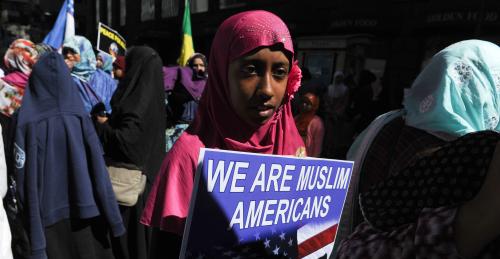
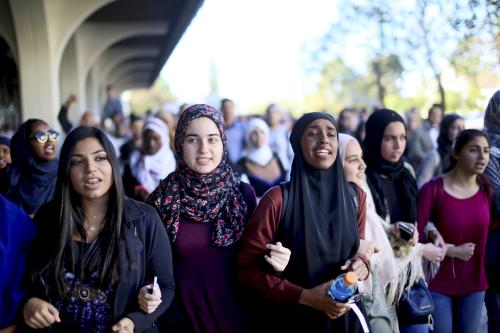
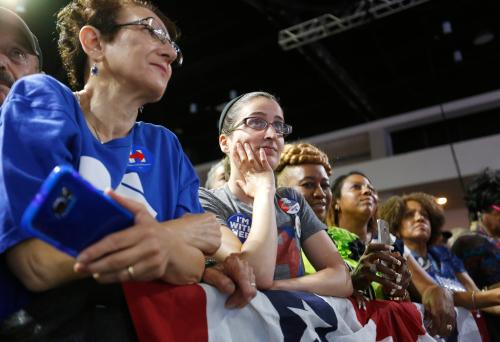
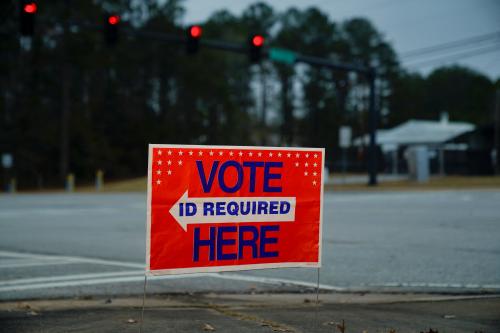
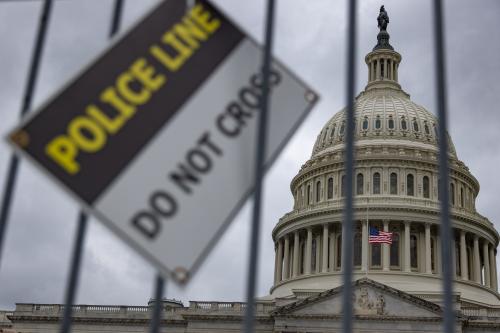
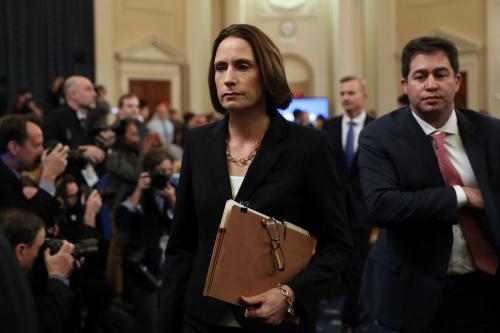
Commentary
Measuring the backlash against the Muslim backlash
July 12, 2016